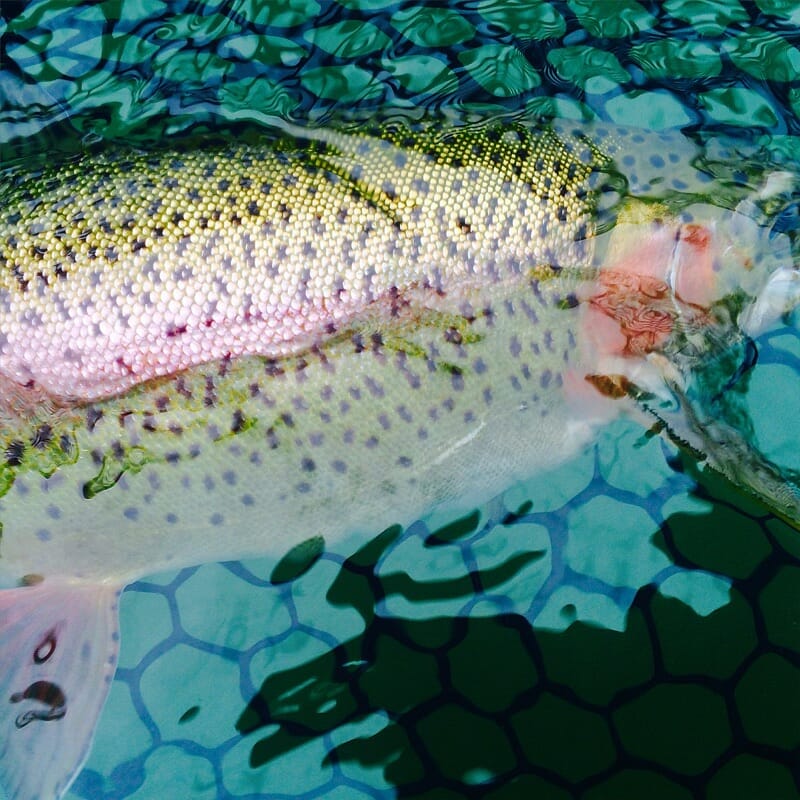As part of its statewide Trout Management Plan, the California Department of Fish and Wildlife (CDFW) is proposing to simplify angling regulations for all inland waters “to make them easier to understand, and to better align regulations with management objectives on each water.”
CDFW is taking public comment on this effort, and on proposed changes to angling regulations for specific waters, until May 3rd.
Trout Unlimited representatives recently met with CDFW Fisheries Branch staff regarding the proposed simplification of inland trout angling regulations. CDFW maintains a primary goal of this administrative effort is to increase opportunities for fishing in California.
TU supports that objective. However, we strongly support angling regulations that will better conserve and sustain wild and native trout fisheries and provide a diversity of angling experiences, and we are concerned that CDFW’s initial proposed slate of regulation changes comes up short on both of these priorities.
TU encourages anglers to submit comments on the proposed simplification of angling regulations. To assist in this action, Trout Unlimited staff, grassroots, California Trout, and allied fishing groups have prepared a table of inland trout waters in which we propose alternative regulations to those presently proposed by CDFW. This table can be found HERE and compares current regulations, CDFW’s proposed regulations, and TU’s proposed changes/comments.
(If you like, you can copy and paste the proposed changes in the table to CDFW’s online comment site HERE. We also encourage you to also make personal recommendations for waters that you fish even if they differ from our comments.)
TU’s Concerns, Beliefs and Recommendations
We have three primary concerns with the slate of angling regulation changes, as currently proposed:
- Waters that support or can support wild trout should not have any reductions in gear protections or increased harvest, without supporting scientific documentation that the system can support increased harvest or mortality. We believe in increasing opportunity to catch trout, but not at the risk of compromising wild or native trout populations.
- Diversity in fishing experience should be a priority management strategy.
- Reducing the length of the angling season for many trout waters by 2.5 months will intensify angling use in the hottest months of the year, especially at lower elevations, eliminate decades of tradition and harm local economies dependent on the current general season opener and closure.
Specifically, TU recommends:
- Do not increase harvest or loosen gear restrictions on waters that can support wild trout.
- If a wild trout fishery is newly opened to year-round angling, make the extended season zero harvest, artificials only with single barbless hooks.
- Provide the science or administrative basis for proposed regulation changes to the public so anglers can better understand the regulation simplification goals and strategies. For waters proposed for increased harvest and all-gear regulations, do pre-implementation analysis of trout populations to establish a baseline and enable adaptive management if populations or habitat conditions become degraded.
- Consider slot limits for trophy trout and wild trout waters.
- If trout waters are open for angling during the spring and fall spawning periods (which vary by elevation and other factors), manage as catch-and-release, artificials with single barbless hooks fisheries during these periods (i.e. limit harvest in such waters to Memorial Day through September 5).
- Ensure science and monitoring will be implemented post-regulation change.
- No changes in regulations for the five existing fly fishing-only waters in the state.
TU’s official comment letter can be found here and the full list of proposed regulation changes can be found online here.
Photo: Wild California rainbow trout, Lower Sacramento River. Courtesy Dave Neal/Reel Adventures.



